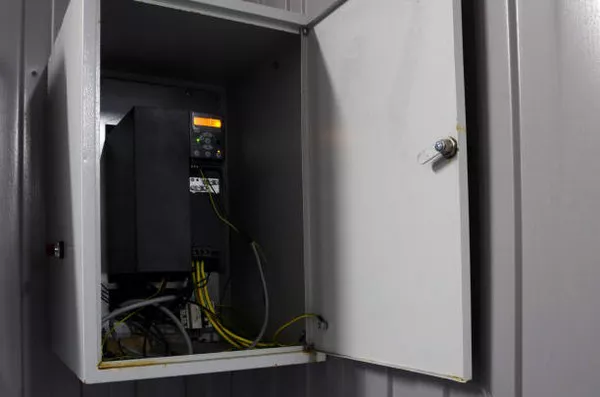In the realm of electrical engineering, generators play a pivotal role in converting mechanical energy into electrical energy. Understanding the fundamental differences between alternating current (AC) and direct current (DC) generators is crucial for engineers, technicians, and enthusiasts alike. This article aims to dissect the workings of both AC and DC generators, exploring their applications, advantages, and limitations.
Introduction to Generators
Generators are devices that produce electrical energy through the conversion of mechanical energy. They are commonly used in various applications, including power plants, automotive systems, and portable electronics. The two primary types of generators are AC and DC, each with distinct characteristics and operating principles.
Alternating Current (AC) Generators
AC generators, also known as alternators, are widely employed in power generation and distribution systems. These generators produce alternating current, where the flow of electric charge periodically reverses direction. The key components of an AC generator include a rotor, stator, and an external power source for initial excitation.
Operating Principle of AC Generators
The principle behind AC generation involves electromagnetic induction, as described by Faraday’s law. When a conductor moves through a magnetic field or experiences a change in magnetic flux, an electromotive force (EMF) is induced in the conductor, resulting in the generation of an alternating current.
Components of AC Generators
Rotor: The rotor of an AC generator comprises a coil of wire wound around an iron core. As the rotor rotates within a magnetic field produced by the stator, it induces an alternating current in the coil.
Stator: The stator is a stationary component surrounding the rotor. It consists of multiple coils of wire arranged in a specific configuration to generate a rotating magnetic field when supplied with AC power.
Excitation System: AC generators require an external power source or excitation system to initially establish the magnetic field within the rotor. This excitation can be achieved through various methods, including permanent magnets or electromagnets powered by a separate DC source.
Applications of AC Generators
AC generators find extensive use in power plants, where they convert mechanical energy from turbines or engines into electrical energy. They are also utilized in automotive alternators to recharge the vehicle’s battery and power electrical systems while the engine is running.
Direct Current (DC) Generators
Unlike AC generators, DC generators produce a continuous flow of electric charge in one direction, known as direct current. Although less common in large-scale power generation, DC generators are prevalent in specific applications requiring stable and controlled electrical output.
Operating Principle of DC Generators
DC generation relies on the principle of electromagnetic induction similar to AC generators. However, DC generators incorporate a commutator mechanism that ensures the output current remains unidirectional. As the rotor rotates, the commutator switches the connection of the armature coils to the external circuit, resulting in a constant polarity in the output voltage.
Components of DC Generators
Rotor: Similar to AC generators, the rotor of a DC generator consists of coils wound around an iron core. As the rotor rotates, it induces an electromotive force in the armature coils, generating a direct current.
Stator: The stator of a DC generator remains stationary and typically comprises field windings that produce a steady magnetic field within the machine.
Commutator: The commutator is a crucial component of DC generators responsible for converting the alternating current induced in the armature coils into direct current. It consists of segmented metal rings that alternate the connection of the armature coils to the external circuit as the rotor spins.
Applications of DC Generators
DC generators are commonly used in applications requiring stable and controlled DC power, such as battery charging systems, electroplating, and certain industrial processes. They also find utility in portable generators and small-scale renewable energy systems.
A Comparative Analysis
Both AC and DC generators serve distinct purposes and offer unique advantages depending on the specific requirements of the application. A comparative analysis can shed light on the differences between these two types of generators:
Efficiency
AC generators typically exhibit higher efficiency compared to DC generators, especially in large-scale power generation and transmission systems. The ability to step up or step down voltages using transformers in AC systems contributes to improved efficiency over long distances.
Voltage Regulation
AC generators offer superior voltage regulation capabilities due to the ease of controlling the excitation level of the field windings. This allows for precise adjustment of output voltage to meet varying load demands, making AC generators suitable for diverse applications.
Maintenance
DC generators generally require less maintenance compared to AC generators due to the absence of slip rings and brushes. However, the commutator in DC generators may require periodic inspection and cleaning to ensure optimal performance and longevity.
Size and Portability
DC generators are often more compact and lightweight than their AC counterparts, making them suitable for portable applications such as camping, boating, and construction sites. Their simplicity and ease of operation also contribute to their widespread use in small-scale power generation.
See Also How Does A Generator Work Simple
Conclusion
In conclusion, both AC and DC generators play vital roles in various electrical systems, offering distinct advantages and applications. AC generators excel in large-scale power generation and distribution networks, providing efficient and flexible operation. On the other hand, DC generators are prized for their stability, simplicity, and suitability for specific applications requiring controlled DC power. By understanding the differences between these two types of generators, engineers and technicians can make informed decisions when selecting the appropriate generator for a given application, ensuring optimal performance and reliability.

